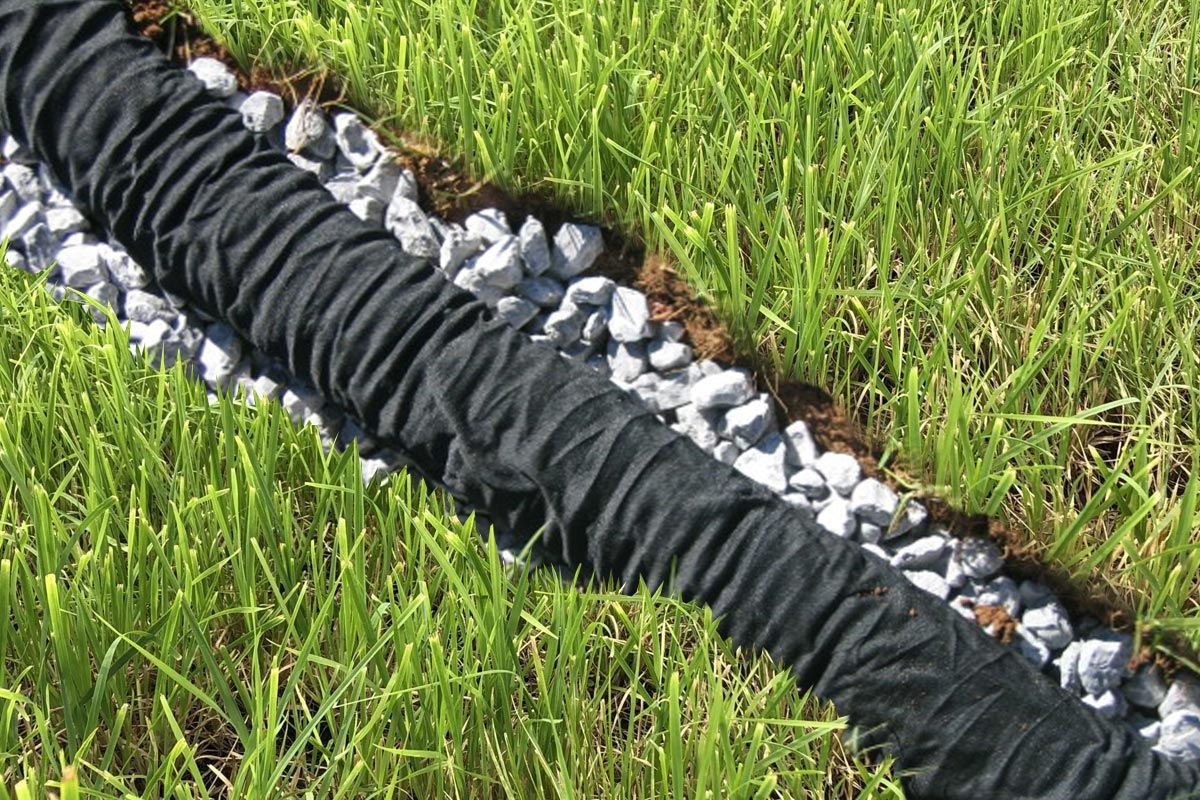| Yard Drainage
Often one of the most overlooked items when buying a home is the exterior water flow. This can include the actual grading of your yard, but it also includes all your downspouts and what happens when the heavy rains hit.
Why is Yard Drainage Important?
Yard drainage can affect the foundation of your home, your landscaping, and the health of your surrounding plants and trees. When water is not properly drained away from the home, it can cause several problems:
- Foundation damage: When water accumulates around the foundation of a house, it can cause the soil to become saturated and unstable, which can lead to foundation damage over time. This can result in cracks in the foundation, shifting of the structure, and other structural issues.
- Landscape damage: Excess water can damage landscaping and outdoor areas. It can cause erosion, kill plants and trees, and create muddy areas that are difficult to walk on.
- Water intrusion: If water is not properly drained away from a home, it can seep into the basement or crawl space, causing water damage and creating an environment that is conducive to mold growth.
- Mosquito breeding: Standing water in the yard can become a breeding ground for mosquitoes, which can carry diseases and pose a health risk to humans and pets.
It is important to have proper yard drainage to prevent these issues. This may involve the installation of a drainage system such as French drains to direct water away from the house. It is also important to maintain gutters and downspouts to ensure that water is properly channeled away from the house.
While it is true that water will naturally percolate into the ground, excess water can still cause problems as described above. Proper yard drainage can help prevent these problems and protect the integrity of the home and its surrounding landscape.
Need help right now?
Are you experiencing water pooling in your yard thats starting to effect your homes foundation? Contact us today!
How Air Xray can help!
1 | French Drains

A French drain is a type of drainage system that is designed to redirect water away from an area where it can cause damage, such as a foundation, basement, or low-lying yard. It consists of a trench filled with gravel or rock, with a perforated pipe at the bottom to collect and transport water. The trench is typically sloped away from the problem area to ensure that the water flows away from it.
To install a French drain, you will first need to determine the best location for the drain and the slope of the trench. Once the trench is dug, it should be lined with a filter fabric to prevent soil from clogging the drain. A layer of gravel or rock is then placed in the bottom of the trench, and the perforated pipe is placed on top of the gravel. More gravel is then added on top of the pipe, and the trench is filled in with soil.
2 | Downspout Drainage

Adding or fixing downspout drainage on your home may vary depending on the specific needs of your home and the existing drainage system. Typically, the first step is to inspect the existing downspout drainage system to identify any problems or areas that need improvement. After identifying any problems, we determine the drainage needs of your property, considering factors such as soil slope, the location of landscaping, and areas that are prone to flooding. Next, we select the appropriate materials for the job, including downspouts, connectors, elbows, and drain pipes. We utilize materials that are compatible with existing systems and are weather resistant that are built to last.
If the existing system needs modification, we use appropriate connectors and elbows to reroute the drainage system as needed. In some cases, a French Drain system might be installed to better channel water away from the foundation. Once the system is installed and/or modified, we test it to ensure that water is properly directed away from the foundation. We then check for leaks and clogs, and make any necessary adjustments to ensure proper drainage.
Regular maintenance is important to ensure that the downspout drainage system continues to function properly. Clear any debris, such as leaves or twigs, from the downspouts and gutters. Check the system regularly for leaks, clogs, and other issues. If you're not comfortable performing these steps on your own, it's recommended that you seek the assistance of a professional. Proper installation and maintenance of the downspout drainage system is crucial to protecting your home from water damage.

